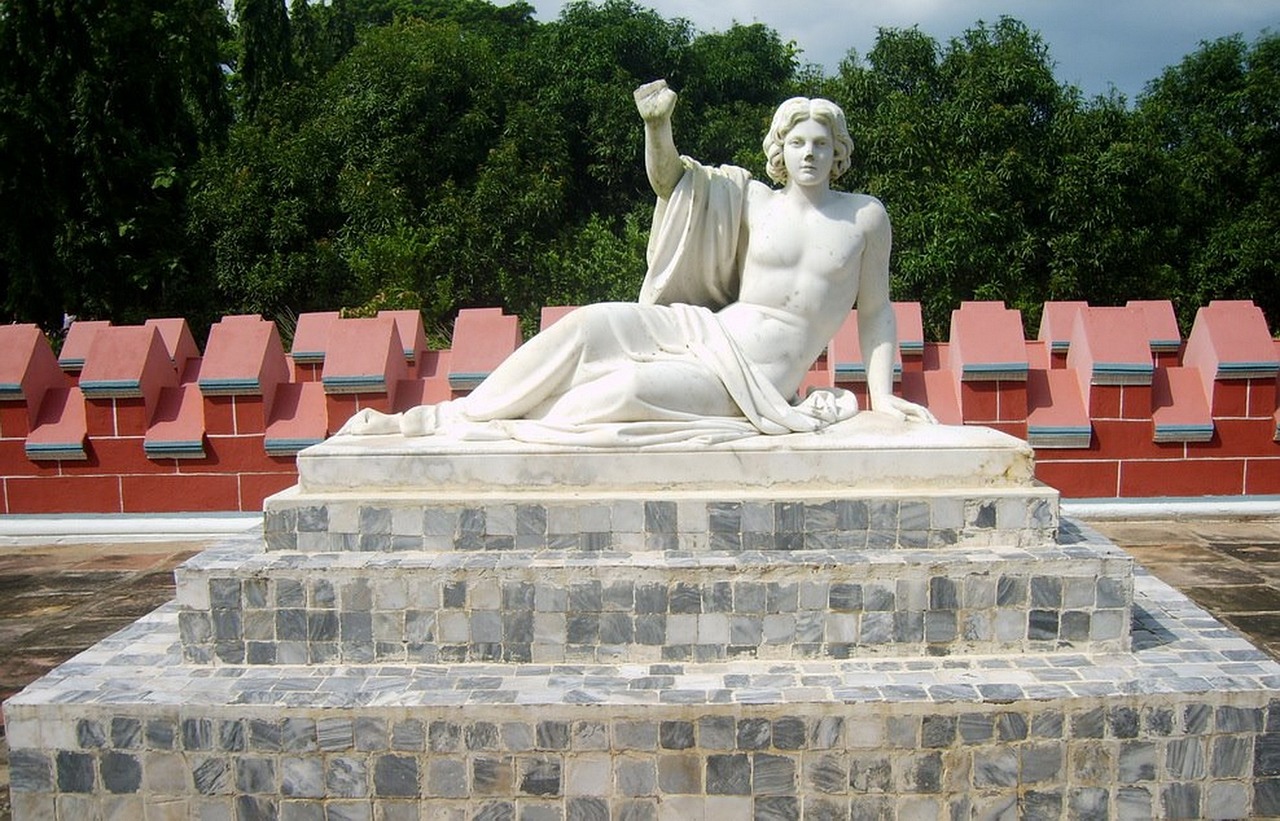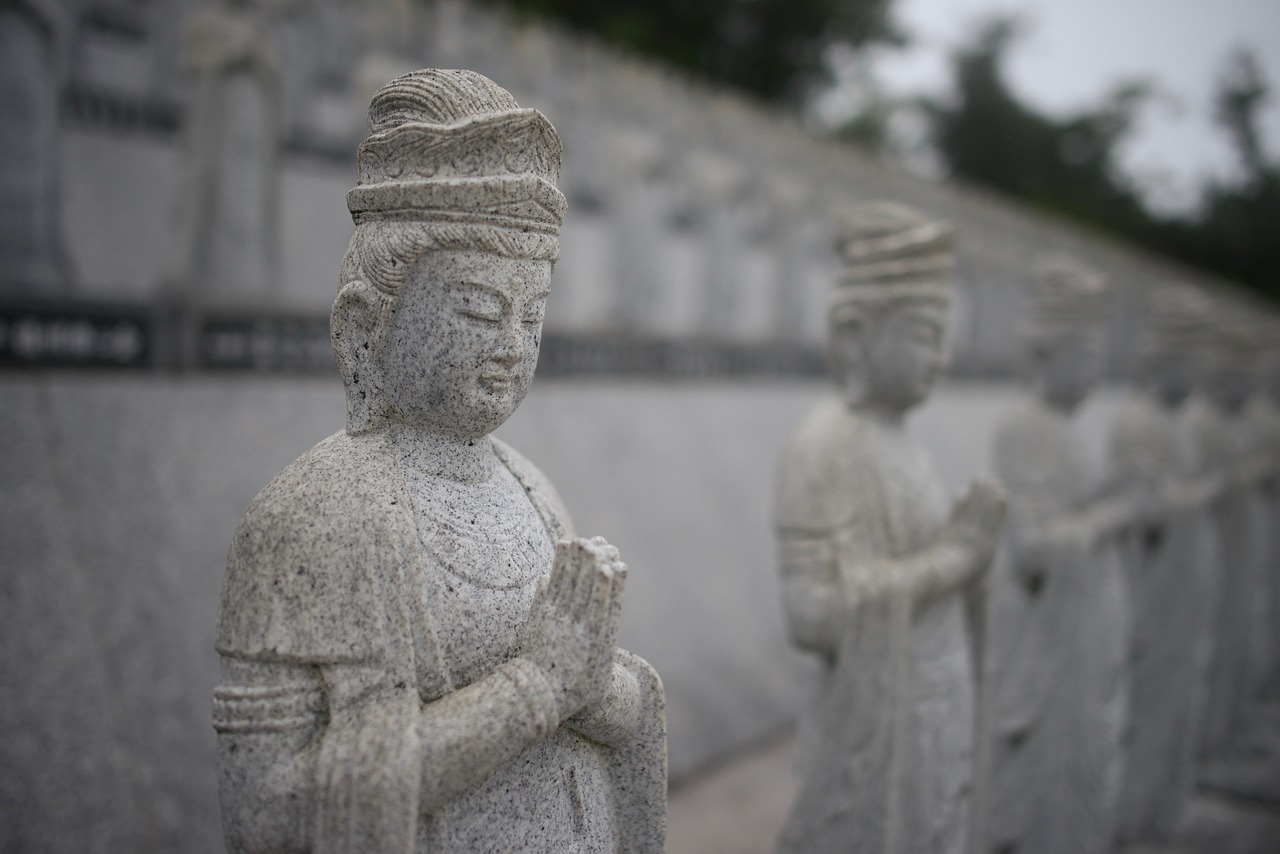This article delves into the crucial role that West Bengal played in India’s struggle for independence, examining significant events, influential figures, and movements that shaped the region’s contribution to the national cause.
The Historical Context of West Bengal
To fully appreciate West Bengal’s role in the independence movement, it is essential to understand its socio-political landscape during the British Raj. The region was a vibrant center for revolutionary activities and intellectual discourse, where ideas of freedom and self-governance flourished.
Key Figures from West Bengal
- Subhas Chandra Bose: A revolutionary leader who advocated for complete independence and formed the Indian National Army (INA).
- Rabindranath Tagore: A Nobel laureate whose literary works inspired a sense of nationalism and pride among Indians.
Subhas Chandra Bose: The Revolutionary Leader
Bose emerged as a pivotal figure in the independence movement, promoting the idea of complete freedom and organizing the INA to combat British rule. His ideologies emphasized self-reliance and unity among Indians, resonating deeply with the masses.
Formation of the Indian National Army
The INA, under Bose’s leadership, aimed to overthrow British rule through armed struggle, marking a significant turning point in the fight for independence.
Rabindranath Tagore: The Voice of a Nation
Tagore’s contributions through poetry, songs, and essays played a vital role in promoting freedom and instilling a sense of pride in the Indian identity.
The Swadeshi Movement in West Bengal
The Swadeshi Movement was a grassroots initiative encouraging the boycott of British goods, fostering a spirit of self-sufficiency among Indians. It led to the establishment of local industries and promoted unity across diverse communities.
Impact of the Swadeshi Movement
This movement sparked widespread participation and mobilized leaders like Bipin Chandra Pal and Aurobindo Ghosh, who spread the message of resistance against colonial rule.
The Role of Students and Youth
The youth of West Bengal actively engaged in the independence movement, forming associations and organizing protests, demonstrating their commitment to the cause of freedom.
Legacy of Youth Involvement
The involvement of young people in the struggle for independence left a lasting legacy, inspiring future generations to advocate for social justice and national integrity.
Conclusion: West Bengal’s Enduring Legacy
West Bengal’s multifaceted contributions to India’s independence movement underscore its significance in shaping modern India. The region’s rich history of activism and leadership continues to inspire the pursuit of freedom and justice today.

The Historical Context of West Bengal
Understanding the socio-political landscape of West Bengal during the British Raj is essential to grasp its role in the independence movement. This region was not merely a backdrop to historical events but a vibrant hotbed of revolutionary activities and intellectual discourse. The socio-political fabric of West Bengal was woven with threads of resistance, creativity, and unity, making it a critical player in the quest for freedom.
During the British colonial rule, West Bengal experienced significant socio-economic changes. The introduction of Western education and the influence of reformist movements led to a burgeoning intellectual awakening. This period saw the rise of numerous literary and cultural figures who played a pivotal role in shaping nationalist sentiments. The Bengal Renaissance, as it is often referred to, produced thinkers and activists who challenged colonial narratives and advocated for social reforms.
Moreover, the economic policies imposed by the British led to widespread discontent among the masses. The exploitation of resources and the emphasis on cash crops resulted in severe famines and economic hardship. This economic distress fueled anti-colonial sentiments, leading to the formation of various political organizations aimed at mobilizing the populace against British rule.
Key events, such as the Partition of Bengal in 1905, further intensified the struggle for independence. The partition was seen as a deliberate attempt to divide and rule, igniting a wave of protests and a surge in nationalist fervor. This period witnessed the emergence of numerous revolutionary groups committed to overthrowing colonial rule through direct action.
In summary, the historical context of West Bengal during the British Raj is marked by a rich tapestry of resistance, intellectual growth, and nationalist movements. Understanding this backdrop is crucial for appreciating the region’s significant contributions to India’s independence movement.

Key Figures from West Bengal
West Bengal has been a cradle of revolutionary thought and action, producing several prominent leaders and freedom fighters whose contributions were pivotal in the struggle for India’s independence. This region not only served as a battleground for revolutionary activities but also as a hub for intellectual and cultural movements that inspired countless individuals to join the fight against colonial rule.
One of the most notable figures is Subhas Chandra Bose, a charismatic leader who emerged as a significant force in the independence movement. Bose’s vision for a free India was radical; he emphasized complete freedom from British rule and sought to galvanize the masses through his unwavering commitment to self-reliance and unity. His formation of the Indian National Army (INA) marked a turning point in the fight for independence, as he mobilized resources and support to challenge colonial authority through armed struggle.
Alongside Bose, Rabindranath Tagore played a crucial role in shaping the national consciousness through his literary contributions. A Nobel laureate, Tagore’s poetry, songs, and essays stirred feelings of patriotism and pride among Indians. His works not only celebrated the rich culture of India but also called for social reform and unity against oppression.
Additionally, the influence of leaders like Bipin Chandra Pal and Aurobindo Ghosh cannot be overlooked. They were instrumental in mobilizing the masses during the Swadeshi Movement, advocating for the boycott of British goods and promoting indigenous products. This grassroots initiative fostered a spirit of self-sufficiency and unity among diverse communities in West Bengal, further strengthening the independence movement.
In conclusion, the contributions of these key figures from West Bengal were not just limited to their immediate actions; their ideologies and movements have left an indelible mark on India’s history, inspiring future generations to strive for justice and equality.
Subhas Chandra Bose: The Revolutionary Leader
Subhas Chandra Bose stands as a monumental figure in the Indian independence movement, known for his unwavering commitment to achieving complete freedom from British colonial rule. His revolutionary spirit and strategic acumen played a crucial role in mobilizing the masses and inspiring a new wave of nationalism among Indians.
Born in 1897 in Cuttack, Odisha, Bose was deeply influenced by the socio-political environment of his time. He believed that mere constitutional reforms would not suffice to liberate India from colonial oppression. Instead, he advocated for direct action and armed struggle as essential means to attain independence.
One of Bose’s most significant contributions was the formation of the Indian National Army (INA). Established in 1942, the INA aimed to overthrow British rule through military means. Bose’s leadership was marked by his ability to rally support from various sections of society, including Indian expatriates in Southeast Asia. Under his command, the INA fought alongside the Japanese forces during World War II, seeking to liberate India from colonial rule.
Bose’s ideologies were revolutionary, emphasizing self-reliance and unity among Indians. He famously declared, “Give me blood, and I shall give you freedom,” a rallying cry that resonated deeply with the Indian populace. His vision for a free India was not just about political independence; he envisioned a nation where social justice and equality would prevail.
Despite facing numerous challenges, including his eventual exile and the lack of resources, Bose’s legacy continues to inspire generations. His relentless pursuit of freedom and his belief in the power of the people remain significant elements in the narrative of India’s struggle for independence. Today, Subhas Chandra Bose is remembered not only as a revolutionary leader but also as a symbol of courage and resilience in the face of adversity.
In conclusion, Subhas Chandra Bose’s contributions to the Indian independence movement were pivotal. His revolutionary spirit, leadership of the INA, and advocacy for complete freedom continue to inspire those who seek justice and equality in contemporary society.
Influence of Bose’s Ideologies
Subhas Chandra Bose, a prominent figure in India’s struggle for independence, articulated a vision that was both radical and transformative. His emphasis on self-reliance and the importance of unity among Indians resonated deeply with the masses, effectively galvanizing support for the independence movement. Bose believed that true freedom could only be achieved through the collective strength of the people, urging them to rise against colonial oppression.
Bose’s ideologies were not merely theoretical; they were rooted in the practical realities of the time. He recognized that the British Raj was not just a political entity but a system that exploited the economic and social fabric of India. By advocating for Swadeshi principles, he encouraged Indians to boycott foreign goods and support local industries, fostering a sense of national pride and economic independence. This call to action was pivotal in mobilizing various sections of society, from the educated elite to the rural populace.
Furthermore, Bose’s vision extended beyond mere economic self-sufficiency. He envisioned a united India, where diverse cultures and communities would come together for a common cause. His rhetoric emphasized the importance of solidarity among Indians, transcending regional and religious divides. This message of unity was crucial in a time when the country was fragmented by colonial rule and internal strife.
In addition to his focus on unity and self-reliance, Bose’s call for armed resistance against British rule marked a significant shift in the independence movement. He believed that non-violent methods, while noble, were insufficient to combat the brutality of colonialism. By forming the Indian National Army (INA), he provided a structured platform for those willing to take up arms in the fight for freedom, thus appealing to a sense of duty and honor among young Indians.
In conclusion, Bose’s ideologies were instrumental in shaping the course of the independence movement. His vision of a free India, rooted in self-reliance and unity, continues to inspire generations, reminding us of the power of collective action in the pursuit of justice and freedom.
Formation of the Indian National Army
The Indian National Army (INA), established under the visionary leadership of Subhas Chandra Bose, played a pivotal role in the Indian struggle for independence from British colonial rule. Its formation marked a significant turning point, as it shifted the focus of the independence movement towards armed resistance, galvanizing support across the nation.
Initially formed in 1942 with the support of the Japanese government during World War II, the INA aimed to liberate India through military action. Bose’s leadership was characterized by his unwavering commitment to achieving complete independence, which resonated deeply with the aspirations of millions of Indians who were disillusioned with British rule.
Under Bose’s command, the INA sought to unite Indians from all walks of life, transcending regional, linguistic, and religious barriers. This unity was crucial as it fostered a sense of nationalism and collective identity among the Indian populace. The INA’s motto, “Give me blood, and I shall give you freedom,” became a rallying cry, inspiring countless individuals to join the cause.
One of the most notable achievements of the INA was its ability to mobilize and train a significant force of soldiers, including women, who played an active role in the movement. The formation of the Rani of Jhansi Regiment, an all-women unit, showcased the inclusive nature of the INA and highlighted the contributions of women to the freedom struggle.
Despite facing numerous challenges, including limited resources and the might of British forces, the INA’s efforts significantly impacted the independence movement. The trials of INA soldiers after the war brought national attention to the cause, further igniting the spirit of resistance across India.
In conclusion, the Indian National Army under Bose’s leadership not only marked a crucial phase in the fight against colonial rule but also left an indelible legacy of courage and sacrifice that continues to inspire future generations in their pursuit of justice and freedom.
Rabindranath Tagore: The Voice of a Nation
Rabindranath Tagore, a towering figure in Indian literature, played an instrumental role in the cultural and political landscape of India during the struggle for independence. His works not only reflect his literary genius but also embody the spirit of national pride and patriotism that resonated with millions. Tagore’s poetry, songs, and essays became a source of inspiration and motivation for those yearning for freedom from British rule.
Born in 1861 in Kolkata, Tagore was a polymath whose talents transcended literature, encompassing music, art, and education. His literary contributions include the iconic collection of poems titled Gitanjali, which earned him the Nobel Prize in Literature in 1913, making him the first non-European to receive this prestigious award. This recognition not only brought international attention to Tagore but also to the Indian freedom struggle.
Through his profound works, Tagore addressed the themes of freedom, identity, and self-determination. His poetry often invoked a sense of unity among Indians, urging them to rise against colonial oppression. Notably, his song “Jana Gana Mana” later became the national anthem of India, symbolizing the collective aspirations of the nation.
Tagore’s essays and public speeches further articulated the need for cultural revival and self-reliance, aligning with the broader Swadeshi Movement that sought to promote indigenous products and ideas. His vision encompassed not just political freedom but also cultural and educational reforms, advocating for a society that cherished its heritage while embracing modernity.
In conclusion, Rabindranath Tagore’s contributions to the independence movement were profound and multifaceted. His ability to weave together the threads of literature and nationalism left an indelible mark on the consciousness of the nation. Today, his legacy continues to inspire new generations in their pursuit of freedom and justice.

The Swadeshi Movement in West Bengal
played a pivotal role in shaping the Indian independence struggle. This grassroots initiative emerged as a response to British colonial policies, promoting the idea of self-sufficiency and the boycott of foreign goods. It ignited a sense of national pride and unity among Indians, particularly in West Bengal, where the movement gained significant traction.
The roots of the Swadeshi Movement can be traced back to the early 20th century, a period marked by rising discontent against British rule. The partition of Bengal in 1905 served as a catalyst, prompting leaders and intellectuals to rally the masses. The call to boycott British goods and support local industries resonated deeply, leading to the establishment of numerous small-scale enterprises across the region.
Impact of the Swadeshi Movement
The Swadeshi Movement’s impact was profound. It not only fostered economic independence but also instilled a sense of empowerment among the populace. Local markets flourished as people began to embrace indigenous products, rejecting foreign imports. This shift not only boosted local economies but also created a strong sense of community among diverse groups, uniting them against a common oppressor.
Prominent Leaders of the Swadeshi Movement
Key figures such as Bipin Chandra Pal and Aurobindo Ghosh emerged as influential leaders during this period. They were instrumental in mobilizing support and spreading the message of self-reliance. Their speeches and writings inspired countless individuals to join the movement, emphasizing the importance of cultural pride and economic independence.
Conclusion
In conclusion, the Swadeshi Movement in West Bengal was not just a campaign against foreign goods; it was a transformative movement that laid the groundwork for India’s struggle for freedom. By encouraging self-sufficiency and national pride, it played a crucial role in uniting the Indian populace against colonial rule. The legacy of this movement continues to inspire contemporary efforts towards economic independence and social justice.
Impact of the Swadeshi Movement
The Swadeshi Movement was a pivotal chapter in India’s struggle for independence, particularly in the state of West Bengal. This grassroots initiative, which emerged in the early 20th century, sought to promote indigenous products while boycotting British goods. The movement not only aimed to foster economic self-sufficiency but also ignited a sense of national pride and unity among the diverse communities in the region.
Widespread Participation and Local Industries
The Swadeshi Movement sparked widespread participation across various strata of society. People from all walks of life came together, motivated by a common goal of resisting colonial rule. This collective effort led to the establishment of numerous local industries, which played a crucial role in revitalizing the economy. Artisans, weavers, and small manufacturers found new opportunities as the demand for indigenous products surged, replacing British imports.
Unity Among Diverse Communities
One of the remarkable outcomes of the Swadeshi Movement was the fostering of unity among different communities in West Bengal. Hindus, Muslims, and people from various backgrounds joined hands to support the cause, breaking down social barriers. This newfound solidarity was instrumental in creating a cohesive front against British oppression, demonstrating that the struggle for independence transcended religious and cultural differences.
Educational Initiatives and Awareness
In addition to economic impacts, the movement also emphasized education and awareness. Many leaders organized campaigns to educate the masses about the importance of self-reliance and the negative impacts of colonialism. Schools and colleges became hubs for discussions and activities promoting the Swadeshi ethos, nurturing a generation of young patriots committed to the cause of freedom.
Conclusion
The Swadeshi Movement’s impact on West Bengal was profound and multifaceted. By promoting local industries and fostering unity among diverse communities, it laid the groundwork for a collective struggle that would ultimately contribute to India’s independence. The legacy of this movement continues to inspire modern initiatives aimed at promoting self-sufficiency and national pride.
Prominent Leaders of the Swadeshi Movement
The Swadeshi Movement, a pivotal chapter in India’s struggle for independence, was characterized by the active involvement of several influential leaders. Among them, Bipin Chandra Pal and Aurobindo Ghosh stood out for their remarkable ability to mobilize the masses and articulate the vision of self-reliance and resistance against colonial rule.
Bipin Chandra Pal was a prominent nationalist leader whose fervent advocacy for self-reliance inspired many. He believed that true independence could only be achieved through economic self-sufficiency. Pal emphasized the importance of using indigenous products and boycotting British goods, which resonated deeply with the public. His speeches and writings encouraged people to take pride in their own culture and resources, fostering a sense of unity among Indians.
Aurobindo Ghosh, another key figure, was not only a political leader but also a philosopher and poet. He played a crucial role in the intellectual awakening of the youth during the Swadeshi Movement. Ghosh’s vision extended beyond mere political freedom; he sought a spiritual and cultural renaissance for India. His writings inspired a generation to embrace the idea of self-rule and resist colonial oppression. Ghosh organized protests and mobilized the youth, urging them to participate actively in the struggle for freedom.
The combined efforts of leaders like Pal and Ghosh were instrumental in galvanizing public sentiment against British rule. They organized rallies, wrote extensively, and engaged in grassroots campaigns that educated the masses about their rights and the importance of self-reliance. Their legacy continues to inspire movements for social justice and national integrity in modern India.
In conclusion, the Swadeshi Movement was not just a political campaign; it was a cultural and economic awakening. Leaders like Bipin Chandra Pal and Aurobindo Ghosh played a crucial role in shaping the narrative of resistance against colonialism, instilling a sense of pride and purpose in the hearts of millions.

The Role of Students and Youth
The youth of West Bengal played a crucial role in shaping the independence movement, demonstrating their passion and commitment to the cause of freedom. During the British Raj, students became increasingly aware of the injustices faced by their country and took it upon themselves to lead the charge for change.
Students formed various associations and groups, which served as platforms for organizing protests, rallies, and discussions. These organizations not only united young people but also inspired them to take action. The fervor of the youth was palpable, as they often took to the streets, rallying for their rights and the rights of their fellow citizens.
- Formation of Student Associations: Groups like the Student Federation of India emerged, fostering a sense of community and purpose among the youth.
- Protests and Rallies: Students organized numerous events, drawing attention to the plight of Indians under British rule and advocating for independence.
- Awareness Campaigns: Educational initiatives were launched to inform the public about the importance of self-rule and the impact of colonialism.
One of the most significant impacts of youth involvement was their ability to mobilize large numbers of people. Their energy and enthusiasm were contagious, inspiring not only their peers but also adults to join the movement. The students’ commitment was evident in their willingness to face police brutality and imprisonment for their beliefs.
Furthermore, the legacy of youth involvement in the independence movement has continued to resonate in modern India. The spirit of activism ignited during this period has influenced countless generations, encouraging young people to engage in social justice and political activism.
In conclusion, the youth of West Bengal were not just passive observers during the independence movement; they were active participants whose contributions were vital to the struggle for freedom. Their legacy of courage and determination continues to inspire future generations in their quest for justice and equality.
Student Organizations and Their Activities
In the vibrant landscape of West Bengal during the independence movement, student organizations played a pivotal role in mobilizing the youth and fostering a spirit of resistance against colonial rule. These organizations were not merely groups of students; they were dynamic entities that galvanized the energy and passion of the younger generation towards the cause of freedom.
Throughout the early 20th century, various student unions and associations emerged, each contributing uniquely to the independence struggle. These organizations organized a multitude of activities, including:
- Protests and Rallies: Students frequently took to the streets, participating in protests that challenged British policies and advocated for civil rights.
- Aware Campaigns: Through awareness campaigns, they educated their peers and the public about the injustices of colonial rule, fostering a collective consciousness among the masses.
- Literary Activities: Many student organizations published magazines and pamphlets that disseminated revolutionary ideas and celebrated Indian culture, enhancing national pride.
- Community Engagement: They engaged with local communities, promoting the Swadeshi Movement by encouraging the use of indigenous products and boycotting British goods.
The impact of these activities was profound. By rallying together, students not only amplified their voices but also inspired others to join the movement. Their enthusiasm and commitment provided a much-needed boost to the independence struggle, creating a ripple effect that resonated across the nation.
Moreover, the legacy of these student organizations extends beyond the independence movement. The values of civic engagement and social responsibility instilled in these young activists continue to inspire generations, encouraging them to advocate for justice and equality in contemporary society.
In conclusion, the contributions of student organizations in West Bengal were instrumental in shaping the independence movement. Their collective actions and unwavering spirit not only played a crucial role in the fight against colonialism but also laid the foundation for future activism in India.
Legacy of Youth Involvement
The role of young people in the struggle for India’s independence, particularly in West Bengal, was not merely a chapter in history but a transformative movement that shaped the nation’s future. Their fervent participation and unwavering spirit left an indelible mark on the quest for freedom, inspiring countless individuals in subsequent generations to advocate for social justice and national integrity.
During the British Raj, the youth of West Bengal were at the forefront of revolutionary activities. They formed various organizations, such as student unions and cultural associations, that served as platforms for expressing their aspirations for a free India. These groups organized protests, rallies, and awareness campaigns, demonstrating their commitment to the cause and their readiness to challenge colonial oppression.
One of the most significant aspects of this youth involvement was their ability to mobilize the masses. Through their passionate speeches and writings, young leaders galvanized support for the independence movement, instilling a sense of pride and unity among diverse communities. Their efforts were crucial in spreading the message of self-reliance and resistance against British rule, echoing the sentiments of established leaders like Subhas Chandra Bose and Rabindranath Tagore.
The legacy of these young revolutionaries continues to resonate today. Their courage and determination serve as an inspiration for the youth of modern India, who are increasingly involved in various social causes, advocating for equality, environmental justice, and human rights. This enduring spirit of activism reflects the profound impact that the youth of West Bengal had on the independence movement, ensuring that their contributions are remembered and celebrated.
In conclusion, the involvement of young people in the struggle for independence not only played a pivotal role in achieving freedom but also laid the groundwork for future generations to continue the fight for justice and integrity. Their legacy is a testament to the power of youth in shaping societal change.

Conclusion: West Bengal’s Enduring Legacy
West Bengal has played a crucial role in India’s struggle for independence, with its contributions echoing through the annals of history. The region’s rich tapestry of activism, intellectual discourse, and revolutionary fervor has not only shaped the independence movement but also laid the foundation for modern India. The legacy of West Bengal is characterized by a blend of cultural richness and a relentless pursuit of justice and freedom.
Throughout the years, West Bengal has been home to numerous freedom fighters and visionaries. Leaders such as Subhas Chandra Bose and Rabindranath Tagore emerged from this vibrant region, inspiring countless individuals with their ideologies and actions. Bose’s radical approach and formation of the Indian National Army marked a significant turning point in the fight against colonial rule, while Tagore’s literary contributions fostered a sense of national pride and unity.
The Swadeshi Movement, which originated in West Bengal, further galvanized the populace by promoting self-sufficiency and encouraging the boycott of British goods. This grassroots initiative not only mobilized the masses but also led to the establishment of local industries, strengthening the economic fabric of the region.
Additionally, the active participation of the youth and student organizations in the independence movement brought a fresh wave of energy and commitment to the cause. Their efforts in organizing protests and raising awareness played a pivotal role in sustaining momentum for the struggle.
Today, the legacy of West Bengal’s contributions to India’s independence movement continues to inspire new generations. The region’s history of activism serves as a reminder of the importance of freedom, justice, and social responsibility. As we reflect on this enduring legacy, it becomes evident that West Bengal’s spirit of resistance and resilience remains vital in the ongoing pursuit of equality and justice in contemporary society.


























































